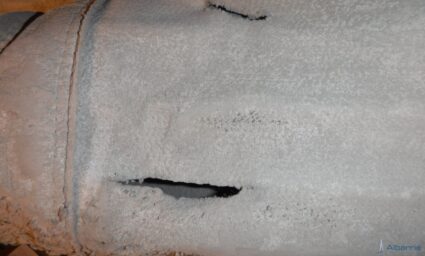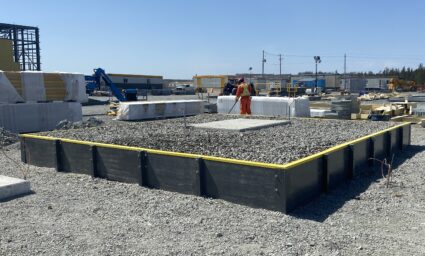

Industrial air filtration is essential for ensuring that air quality is safe and clean in industrial settings. Baghouses, which utilize filter bags, either woven or nonwoven, trap particulate matter from the airstream and are an integral part of the filtration process. However, baghouse systems may experience excessively low- or high-pressure levels without proper maintenance and monitoring. This article provides some tips on troubleshooting and maintaining baghouse systems when the differential pressures are out of balance for normal operating parameters.
Baghouse differential pressure drop, or DeltaP, is the pressure difference between the dirty-air side of the baghouse and the clean-air side (across the bags). The quantity of airflow and fabric resistance will determine the differential pressure. As a guideline, baghouse pressures should stay steady between 2″ WG and 6″ WG. It is important to note that optimal differential pressure can be application dependent. However, many factors contribute to the baghouse differential pressure, such as particle size and shape, moisture levels, dust loading, and cleaning effectiveness.
It is a sign that your baghouse filter bags are nearing the end of their lifespan when the pressure reading increases above 6″ and moves closer to 8″ WG after cleaning, and your baghouse requires further maintenance.

It’s important to identify the source of the pressure irregularity. High differential pressure will increase your energy consumption when using a variable-speed fan since the blower has to work harder to pump air through the system, causing additional wear on the filter bags, solenoids, and diaphragms.
When the baghouse system experiences unexpectedly high-pressure readings, inspect these key maintenance items:
A gradual increase in pressure is often due to excessive dust cake on the filter and dust entering the filter media’s depth. Albarrie recommends on-demand cleaning over timed cleaning as the fabric becomes more aged or penetrated. In this scenario, increased cleaning cycles are required. When properly monitored, this change can be easily recognized, and Albarrie’s High-Efficiency Cleaning can be used to remove the embedded particles, increasing the baghouse filter bag’s life.

Albarrie baghouse and dust collector high-efficiency cleaning services, maintenance & troubleshooting keeps baghouses in top condition and extends bag service life.
A variety of factors can cause low-pressure readings in baghouse systems. A sudden baghouse pressure drop below 2″ WG can indicate a possible filter bag leak, rupture, or plugged ducting. Perform a leak detection test to see if there are any holes within the filter bags, the system’s housing, or other mechanical parts.
Other common causes of low pressures drops are:
It’s important to monitor your baghouse’s differential pressure reading and take action when it deviates from its normal range for extended periods of time. Investing in regular maintenance and troubleshooting can reduce energy costs, prevent costly repairs, and ensure optimal performance of your baghouse.



